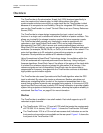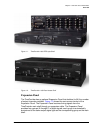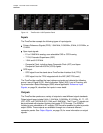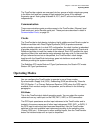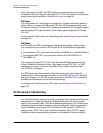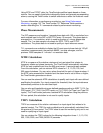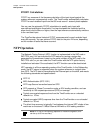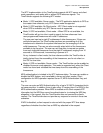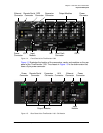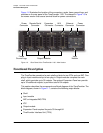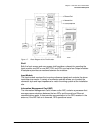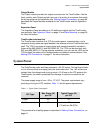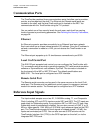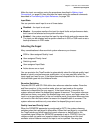
Chapter 1 Overview of the TimeProvider
SNMP – Simple Network Management Protocol
28 TimeProvider User’s Guide 097-58001-02 Revision G – April 2008
SNMP – Simple Network Management Protocol
The TimeProvider offers two versions of SNMP: v2 and v3. SNMP v3 software
offers additional security with authentication and privacy parameters. The security
feature allows secure transactions to provide protection against modification of
information, masquerade, and message stream modification.
Simple Network Management Protocol (SNMP) is based on a client-server
query-response mode. A manager is the client generating the queries, while an
agent is the server generating the responses.
The TimeProvider SNMP is an SNMP agent that requires Ethernet connectivity. If
SNMP is present, port 161 becomes the port of standard SNMP interactive
communications, while port 162 becomes the trap port. Since the TimeProvider
SNMP supports all existing functions, full system control of the TimeProvider is
maintained through SNMP.
The TimeProvider implements an SNMP agent. A Management Information Base
(MIB) browser or the SNMP Manager is used to access, retrieve, and query
information defined by the MIB.
All reports, queries, autonomous messages, control, provisioning, and administration
(except for communication port parameters, Set User ID/Password, Set IP
assignments, Reset connection, and SNMP community settings) are available
through SNMP. Refer to
the TimeProvider TL1 Reference Guide
for more
information.
Physical Description
The TimeProvider consists of a shelf, plug-in cards, connector adapter panels for
the cards, cables, hardware, and software. The TimeProvider is available in two
configurations: front access (Model 1000) and rear access (Model 1100), as shown
in Figure 1-1 and Figure 1-2.
Figure 1-4 illustrates the location of the connectors, cards, and modules in the
TimeProvider 1000.



